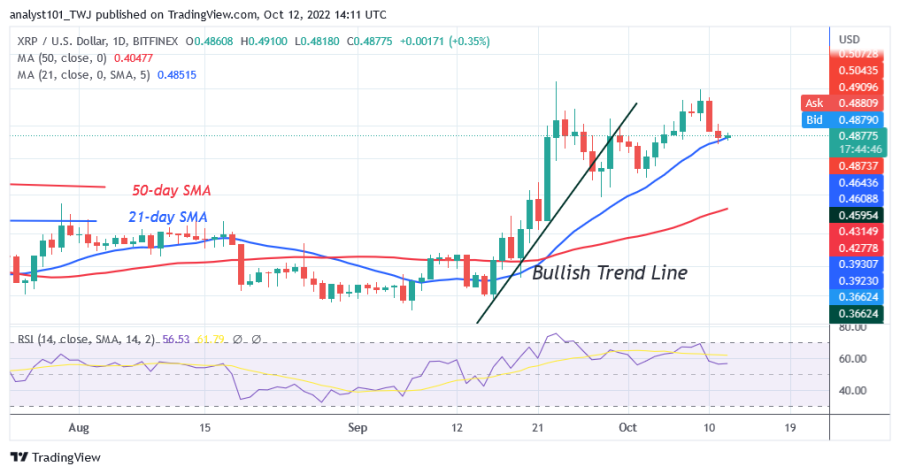Ripple Threatens To Fall As It Fails To Break $0.55 High
The price of Ripple (XRP) is trading in the bullish trend zone as it pulls back above the 21-day line SMA.
Long-term forecast for the Ripple price: bullish
On October 9, buyers made another attempt to break the $0.55 resistance zone but were rejected. This will be the third unsuccessful attempt to start a new uptrend. Nevertheless, the altcoin will reach a new high of $0.66 if the buyers overcome the $0.55 resistance.
However, if the buyers fail to break the resistance zone, there is a tendency for the altcoin to fall below the moving average lines. On the downside, XRP will fall below the 21-day line SMA if it is rejected at the recent high. The bullish scenario will lapse if the price falls below the blue line moving average. Ripple will fall and find support above the breakout level of $0.41. Meanwhile, XRP/USD is trading at $0.49 at the time of writing.
Ripple indicator analysis
Despite the retracement, XRP is at level 57 of the Relative Strength Index for the period 14. The cryptocurrency can potentially rise to the previous highs. Moreover, XRP will rise as long as the price bars are above the moving average lines. The cryptocurrency is in a bullish momentum above the 25% area of the daily stochastic.
Technical Indicators
Key resistance zones: $0.40, $0.45, $0.50
Key support zones: $0.30, $0.25, $0.20
What is the next step for Ripple?
Since October 11, Ripple has consolidated above the $0.47 support. The altcoin is capable of retesting the overriding resistance if the current support holds. On October 11, XRP corrected upwards as the candlestick tested the 78.6% Fibonacci retracement level. The correction suggests that XRP will fall to the 1.272 Fibonacci extension level or the $0.45 low.
Disclaimer. This analysis and forecast are the personal opinions of the author and are not a recommendation to buy or sell cryptocurrency and should not be viewed as an endorsement by CoinIdol. Readers should do their own research before investing
Source: Read Full Article



